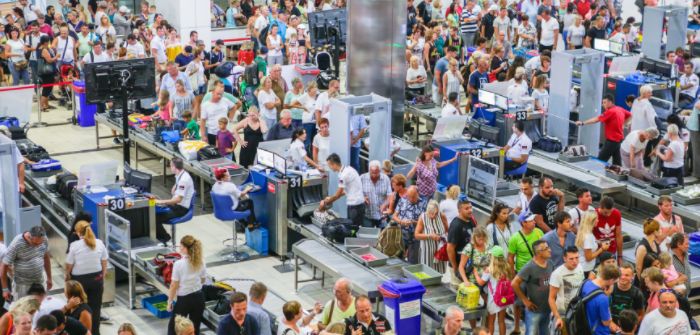The airports of the future are more likely to be robust if they are designed with resilience in mind, as well as service and capacity, writes Richard Hartshorn, aviation technical director at Atkins.
Imagine that you knew every facility at your airport had been designed to an agreed level of resilience and had the ability to tolerate hourly or daily stresses and shocks? Imagine the reassurance for operational teams that they could lose x% capacity and still deliver the highest service levels to passengers. And you know clearly why that level of resilience was chosen and the options considered.
My sense is that our industry is a long way from this goal. For such an important consideration, especially as airports get busier and operate closer to capacity, it is surprising that there is no airport best practice available or even a simple way to benchmark the resilience of different airport ecosystems. I see real benefits in planning airports through the lens of operational resilience that could enable improved service delivery outcomes that may not be achieved through current design practices.
Mention the word ‘resilience’ and many think of airspace congestion, runway hold delays, winter operations, baggage failures, power and IT failures. The Canadian Centre for Resilience of Critical Infrastructure, a global center for thought leadership in the study of infrastructure resilience, defines operational resilience as “that essential ability of an operation to respond to and absorb the effects of shocks and stresses and to recover, as rapidly as possible, normal capacity and efficiency”.
Airports with a lack of resilience deliver inconsistent service levels and can be a frustrating working environment where significant management time and cost is incurred chasing down problems and recovering service. Therefore, surely the corollary is true? Airports designed to be resilient deliver a higher passenger service performance and are more cost-effective to operate.
For airport ecosystems to operate efficiently, the flow of aircraft, vehicles, passengers, bags and cargo need to be synchronized to the beat of the flying program. It is inevitable that within such a complex system there are going to be stresses or shocks: equipment failures, lack of resources to operate facilities, higher than usual volumes, and so on. Therefore, it seems sensible to build a buffer into the system, to ensure small interruptions do not have a disproportionate impact.
Resilience is more complex than just ‘N+1 redundancy’ [a form of resilience that ensures system availability in the event of component failure]. Understanding the level of resilience at an airport is highly interrelated to desired service and capacity levels. Airport capacity is rarely constant and evolves every minute depending on the mix of demand (large or small aircraft, the type of passengers), the number of facilities available (desks, lanes), the level of resourcing as well as disruptions, whether airport-related (aircraft inoperable) or non-airport-related (road congestion).
Airport teams have choices about how they build in resilience, either through more infrastructure, a change to a process, or by permitting a fall in service levels for a short period of time. Let’s use the baggage reclaim facility as an example – development teams could deliver an additional reclaim belt for short-lived peaks caused by aircraft arrivals or a belt breakdown, or the operational team could use additional manpower to clear bags off the belts to maximize bag throughput; or they could do neither of these and allow waiting times or congestion to increase until demand drops away.
How airport designers respond to common stresses is key to creating fit-for-purpose airports. Design and operational teams need to have a business case discussion on the most appropriate approach. An elegant operational workaround executed twice a year for a short period may well be a better option than building expensive, little utilized infrastructure.
Leaving it to capacity analysts who are running simulation tools is not the answer – they do, however, have a role in providing data to inform the decision making.
As we optimize more throughput from airports and operate closer to capacity, my view is that we need to take another step forward in our airport planning approaches. Triangulating the airport designs through the lenses of service, capacity and resilience may provide the robustness for the next generation of airports.

